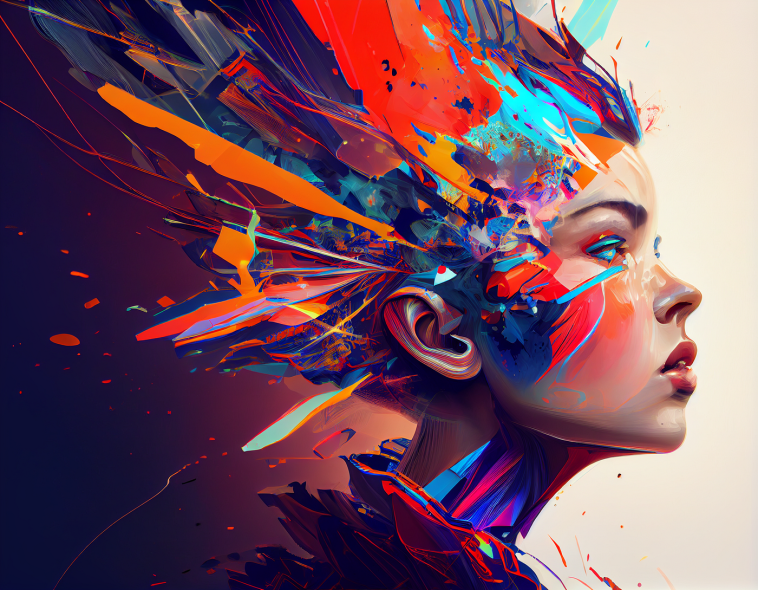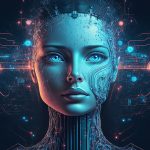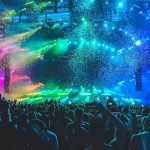Introduction.
Artificial Intelligence is changing the way we look at art. Instead of relying solely on traditional tools, we now have the opportunity to create stunning pieces of art using AI.
If you’ve ever found yourself thinking, “I wonder if I could create my own AI art generator?” – you’re not alone.
The best part? It’s more possible than you might think, and with the right approach, you can train your very own AI art generator to create unique and beautiful artwork.
But where do you begin? How does AI art work? And is it as easy as pressing a button and watching the magic happen?
These are the questions I’ll answer in this post, and by the end, you’ll have a solid understanding of how to train an AI to create art, and why you might want to do it in the first place.
What Exactly Is an AI Art Generator?
Before diving into the steps of training an AI art generator, let’s take a moment to understand what it is.
AI art generators are programs that use machine learning models to generate artwork, often based on the styles or techniques they’ve been exposed to through training on large datasets of images.
Think of it as teaching a computer to paint or sketch by showing it examples of existing artwork. Over time, the AI learns patterns, colours, shapes, and styles, ultimately producing its interpretations.
This process of training an AI to generate art involves feeding it a large number of images, and from those, the machine learns how to create similar new pieces, yet unique.
Why Train Your Own AI Art Generator?
Training your own AI art generator is an opportunity to create something that’s uniquely yours. Here are a few reasons why you might want to give it a go:
- Creative Control: By training your own AI art generator, you have full control over the style, input, and type of artwork your AI creates. You can teach it to mimic a specific artist’s style or introduce it to new concepts that you want to explore.
- Personalized Artwork: The art generated by your AI will be unique to your training process, giving you a more personal connection to the creations it produces.
- Fun and Experimentation: If you’re someone who loves to experiment and try new things, training an AI art generator can be an incredibly fun challenge. It’s like creating art in a new, futuristic way.
- Learn About Machine Learning: Training an AI art generator is a great way to learn about machine learning and artificial intelligence. You get to dive into an exciting and rapidly growing field, expanding your understanding while doing something creative.
- It’s More Accessible Than Ever: With platforms and tools becoming more user-friendly, training an AI art generator is no longer reserved for tech experts. Anyone can get involved, even if they don’t have a background in programming.
How Do I Train My Own AI Art Generator?
Training your own AI art generator might sound intimidating at first, but it’s quite manageable if you break it down into steps. Let’s walk through the basics:
Step 1: Choose Your Tool
First things first, you’ll need to choose a tool to train your AI art generator. Several platforms offer easy-to-use solutions for AI art generation. Some popular options include:
- RunwayML: A creative toolkit that allows you to train and deploy machine learning models for art generation. It’s perfect for beginners and creative professionals.
- Artbreeder: A platform where you can mix and match different art styles, allowing you to create new pieces using the AI’s learned patterns.
- DeepArt.io: Another option that allows you to upload your images and turn them into artworks based on various styles.
- Google’s Deep Dream: A neural network-based platform for generating psychedelic and surreal artwork.
Most of these tools are free to use with limited features, and they also offer premium versions if you want more advanced options.
Step 2: Gather and Prepare Your Dataset
Next, you’ll need to gather a dataset of images. This is where you’ll want to think about what kind of art you want your AI to generate.
For example, if you want your AI to create impressionistic landscapes, you should feed it a large collection of impressionist paintings.
You can find datasets online or use web scraping tools to gather images from various sources. Make sure to respect copyright laws and use images that are either free to use or within public domain guidelines.
Once you have your dataset, you’ll need to clean and organize it. This means removing duplicate images, ensuring the images are of high quality, and resizing them to a consistent size. This ensures that your AI can learn from the best possible data.
Step 3: Train the AI
Now comes the fun part: training the AI. To do this, you’ll need to use a machine learning framework like TensorFlow, PyTorch, or Keras. These frameworks allow you to build neural networks that can learn from your dataset.
Training an AI requires computing power, so it’s helpful to use cloud services like Google Colab or Amazon Web Services (AWS), which offer free or affordable access to GPUs (Graphics Processing Units) for faster training.
Depending on the complexity of your dataset and the type of art you’re aiming for, training can take anywhere from a few hours to a few days.
During this time, the AI will adjust its internal parameters to mimic the patterns in your dataset, learning how to generate new images based on what it has seen.
Step 4: Fine-Tune and Evaluate
Once the AI has been trained, it’s time to evaluate its output. Look at the images it produces and ask yourself whether they match the style or concept you had in mind.
If not, you can fine-tune the model by adjusting the training parameters or feeding it additional data to improve its understanding.
Most AI art generators allow you to refine the model by retraining it with new images or tweaking existing ones.
This is an iterative process, meaning you’ll likely need to experiment with different approaches until you get the results you’re looking for.
Step 5: Generate Your Artwork
Once your AI is trained to your satisfaction, you can start generating artwork. Whether you’re using a simple platform like Artbreeder or a more complex tool like TensorFlow, you’ll be able to input new prompts or instructions for the AI to create art.
You can experiment with different styles, settings, and inputs to see how the AI responds. This is where the real creativity comes into play—your AI is now your artistic partner, capable of producing unique and original pieces.
FAQs
Do I need coding skills to train an AI art generator?
While coding skills are helpful, many AI art platforms like RunwayML and Artbreeder make it accessible to non-programmers. They offer user-friendly interfaces that allow you to get started without any coding knowledge.
How long does it take to train an AI art generator?
The time it takes to train your AI depends on the complexity of the project and the size of your dataset. It could take anywhere from a few hours to a few days, especially if you’re using cloud services for faster processing.
Can I use AI to generate any kind of art?
Yes, AI can generate all sorts of art, from paintings and digital art to music and poetry. The key is to tailor your training process to the type of art you want to create.
Further Resources
- Google Colab: A free cloud-based platform for coding and training AI models.
- RunwayML Tutorials: A great place to start for beginners looking to train their own AI models.
- Deep Learning with Python by François Chollet: A fantastic resource to dive deeper into machine learning and AI.
- Kaggle: A platform full of datasets and notebooks that you can use to train your models.
Conclusion
Training your own AI art generator is a rewarding and creative process that allows you to explore the intersection of technology and art.
While it might seem like a complex task at first, with the right tools and guidance, it’s something anyone can get involved in.
So, are you ready to start training your own AI art generator and see what amazing pieces it can create?





GIPHY App Key not set. Please check settings